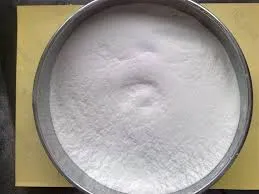
Dec . 19, 2024 12:31 Back to list
mortar adhesive additive
Understanding Mortar Adhesive Additives Enhancing Performance and Durability
The construction industry constantly evolves, seeking innovative solutions to improve the performance of materials and systems. One such innovation is the use of mortar adhesive additives, which play a vital role in enhancing the properties of mortars used in various applications, from bricklaying to tile setting. These additives are essential for achieving superior adhesion, flexibility, and overall durability in construction projects.
Mortar is a mixture of cement, sand, and water, primarily used to bind building materials like bricks, stones, and tiles together. While traditional mortar has proven effective for many applications, it often falls short in certain conditions, particularly regarding adhesion strength, resistance to environmental factors, and longevity. This is where mortar adhesive additives come into play, significantly improving the overall quality and performance of the final product.
Types of Mortar Adhesive Additives
Several types of additives can be integrated into mortar mixtures, each serving a specific purpose
. The most common categories include1. Polymeric Additives These are water-soluble resins that enhance the adhesion of mortar to substrates. Polyvinyl acetate (PVA) and ethylene-vinyl acetate (EVA) are popular polymeric additives. They improve the mortar’s flexibility and provide excellent bonding, which is particularly beneficial for applications exposed to vibrations or movements, such as in walls subjected to seismic activity.
2. Superplasticizers These additives are used to improve the workability of mortar without adding excess water. Superplasticizers allow for a more fluid mix, enabling easier application and leveling while maintaining strength and durability. They are crucial in high-performance mortars, which require low water-cement ratios.
3. Air-Entraining Agents In colder climates, air-entraining agents are vital for preventing freeze-thaw damage to mortar. These additives create tiny air bubbles within the mortar, allowing for the expansion and contraction that occurs during freeze-thaw cycles. This increases the mortar's resilience and longevity.
4. Fibers Adding synthetic or natural fibers, such as polypropylene, nylon, or cellulose, can enhance the tensile strength and ductility of mortar. Fibers help reduce cracking due to shrinkage and thermal expansion, making the mortar more robust under varying environmental conditions.
mortar adhesive additive

Benefits of Using Mortar Adhesive Additives
Incorporating mortar adhesive additives offers numerous benefits that can significantly improve the quality of construction projects
- Enhanced Bonding Additives improve adhesion between the mortar and the substrate, ensuring a stronger bond that withstands environmental stresses and load changes.
- Flexibility and Durability Mortars that include additives are more flexible, reducing the risk of cracks that can arise from thermal expansion or mechanical movement. This flexibility leads to extended operational lifespans for structures.
- Improved Workability Additives such as superplasticizers enhance the application process, allowing for a smoother and more manageable mortar mix. This can accelerate project timelines and reduce labor costs.
- Resistance to Environmental Factors Mortars enriched with air-entraining agents and polymers have greater resistance to water penetration, preventing damage from moisture and freezing temperatures.
Conclusion
As the demand for high-performance construction materials continues to rise, mortar adhesive additives emerge as essential components in producing resilient and durable mortars. By enhancing adhesion, flexibility, and resistance to environmental pressures, these additives not only improve the quality of construction but also contribute to long-term durability and performance. As the industry moves forward, the integration of innovative additives will be critical in addressing the challenges posed by modern construction demands, ensuring that structures remain strong and reliable for years to come.
-
Versatile Hpmc Uses in Different Industries
NewsJun.19,2025
-
Redispersible Powder's Role in Enhancing Durability of Construction Products
NewsJun.19,2025
-
Hydroxyethyl Cellulose Applications Driving Green Industrial Processes
NewsJun.19,2025
-
Exploring Different Redispersible Polymer Powder
NewsJun.19,2025
-
Choosing the Right Mortar Bonding Agent
NewsJun.19,2025
-
Applications and Significance of China Hpmc in Modern Industries
NewsJun.19,2025







